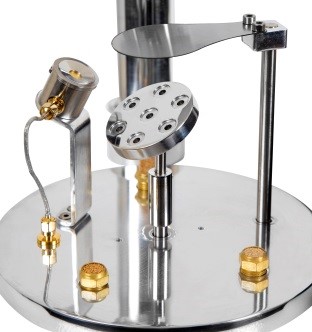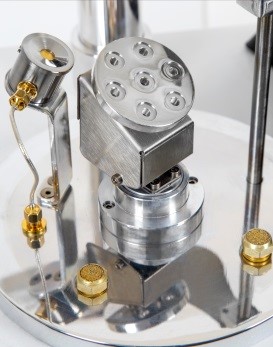Description
Sample preparation using Carbon coating is the recognised method for non-conductive and low conductive specimens or samples.
The DCT system is a versatile carbon evaporator for preparing specimens for electron microscopy or EDXA analysis. It has been designed as a high-current power supply capable of evaporating both carbon rod and carbon fibre. In other words, it can coat carbon on different types of substrates for X-Ray analysis and coating conducting carbon fibre & rod for SEM analysis.
The excellent design of the system enables the user to easily load and unload samples, and quickly replace the carbon fibre/rod. The system is equipped with a film thickness monitor (FTM), which measures the coating thickness on a quartz crystal mounted in the vacuum chamber with an accuracy of 1 nm. The system can automatically terminate a coating cycle when the required thickness or time has been achieved..
The compact and easy to use carbon coater has the option of using existing pumps or supplied with a pump.
For external pumping, the onboard computer controls the pump or pumping rig.
Larger samples can be accommodated with our increased vacuum chamber DCR-L and DCT-L system
Carbon Coating
Due to its excellent transparency and good electrical conductivity, deposited carbon thin films are widely used for either electron microscopy (EM) or X-ray microanalysis applications such as:
• support films for TEM (high vacuum (HV) evaporation) Carbon Coater
• conductive films for SEM/EDS samples (low vacuum evaporation)
• conductive surface films for non-conductive microprobe samples (HV evaporation)
• conductive surface films for non-conductive EBSD samples (HV evaporation)
• conductive surface films for non-conductive FESEM samples (HV evaporation) Carbon Coater
• conductive surface films for non-conductive FIB samples (HV evaporation)
Our board computer integration makes the Desktop Sputter coater an ideal laboratory and research tool for scanning electron microscopy (SEM) and Tunnelling electron microscopy analysis(TEM).
Thin films of about 5 nm (50Å) are used for particle support and as an isolating layer in autoradiography. Thicker films are also used in SEM and X-Ray Microanalysis. In general, deposited thin films should be uniformed with fine grain sizes and reproducible film thickness.
Carbon rod and carbon fibre are the two widely used sources for carbon evaporation in laboratories around the world. They each have their own features that make them of specific interests to the users. For a better understanding, further details of these features are presented in the following sections.
Carbon Rod versus Carbon Fibre Evaporation – Carbon Coater
Evaporating carbon thread or a pre-shaped carbon rod are both common methods to evaporate carbon. Using pre-shaped rods with the correct control system (pulse, continuous and auto) delivers a high-quality carbon layer and also gives good control over the thickness of the carbon layer. However, some users prefer to use carbon fibre because it has a faster and simpler process comparing with a carbon rod.










